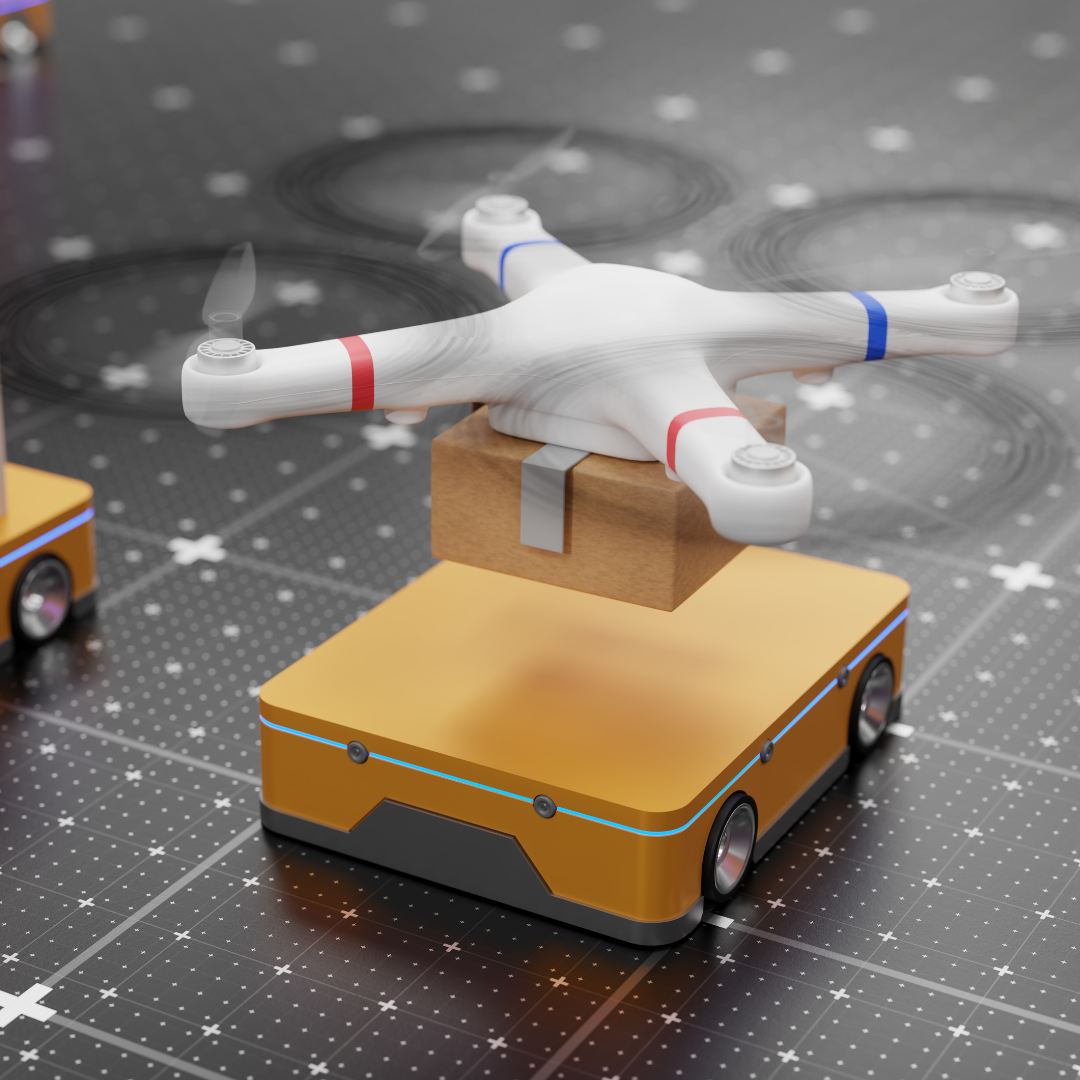
UPS is deploying Verity warehouse drones for inventory tracking, a technology that will revolutionize how facilities identify stock discrepancies while maintaining accurate data on inventory levels. According to a Supply Chain Dive report determined that this roll-out will not only reduce “high-reach tasks” for employees, but also address the pain points of inaccurate counts and misplaced items, which can lead to order fulfillment disruptions.
Verity isn’t the only company innovating in this space. Corvus Robotics recently unveiled a new drone-powered system that allows safe operations in warehouses without disrupting normal workflows, as reported by Drone Life . The JLL podcast, “How drone tech is changing warehouse management ” discusses the logistics of deploying these drones and misconceptions about the time commitment involved in setting up these infrastructures:
“You actually need these relatively small drones,” says Raffaello D'Andrea, Founder of inventory drone company Verity. “Some of our sites only have two of them, and some of the bigger sites that are over a million square feet have more than 10, but always less than 20. In terms of infrastructure, all we need is a power cord to the chargers and internet access at the chargers, which is mostly just Wi-Fi. That's it,” D'Andrea explains.
Verity claims it can commission the system in as little as a week, similar to the timeline for Corvus One’s system. Using generative AI, these warehouse drones can navigate “narrow aisles as small as 50 inches wide and read any type of barcode in orientation” according to Drone Life . In addition to improving inventory accuracy up to 99.9%, the Corvus One drones claim to deliver a 10x increase in labor productivity and substantial labor cost savings.
While this sound promising, there are concerns about potential job displacement. This is a common worry with new robotic technologies across industries.
However, D'Andrea addresses these concerns: "A system like ours doesn't take jobs away. It takes the task of doing inventory away, but typically, inventory is done by people already at the warehouse. Because it's done infrequently, you don't have dedicated inventory staff. Usually, when it's time to do inventory, everyone gets involved, which is why it's so error-prone.”
D’Andrea also notes that employees who previously needed to go 30-40 feet up in the air on a scissor lift won’t have to face those risks with these technologies. Instead, they can focus their attention on analyzing their inventory daily to identify any errors and by doing so, “this results in a well-maintained warehouse where errors drop from 4-5% to nearly zero."
Despite the numerous benefits claimed by these drone systems, it is crucial to take the right testing precautions before making a decision. An article by Zena Drone outlines the following steps for warehouses when choosing a suitable drone:
1. Define Your Needs: Understand the specific tasks you want the drone to accomplish, be it inventory, security surveillance or maintenance checks.
2. Prioritize Safety: Opt for drones with safety features like obstacle avoidance and geo-fencing.
3. Test Before Investing: Run pilot programs to see how the drone performs in your warehouse environment.
It’s important to note, while determining the logistics of setting up these drones, that every technology installation can come with its challenges. As Zena Drone outlined, “The initial setup of warehouse automation with drones can be capital-intensive, requiring significant investment.” However, their findings determined that the risks might be worth the costly investment.
Interested in more content like this? Read our recent articles, The Industrial Real Estate Surge Explained or How Real Estate Companies Can Thrive in the Growing Data Center Market .